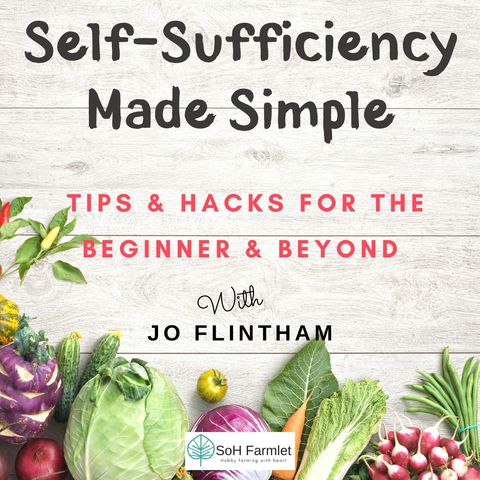#17 Move It On - Crop Rotation
20 set 2022 ·
12 min. 23 sec.

Scarica e ascolta ovunque
Scarica i tuoi episodi preferiti e goditi l'ascolto, ovunque tu sia! Iscriviti o accedi ora per ascoltare offline.
Descrizione
Back in episode 8 we covered the difference between perennials and annuals. If you haven’t listened to that episode yet and aren’t sure of the difference make sure you put...
mostra di più
Back in episode 8 we covered the difference between perennials and annuals. If you haven’t listened to that episode yet and aren’t sure of the difference make sure you put it on your play next list.
Annuals are different from perennials in many different ways. They are very vigorous growers going through a full life cycle in under a year meaning they grow from seed to a plant that produces seeds for the next cycle. Annuals are shallow-rooted with many annuals having their roots in the top 30 cms of soil and can dry out very fast in unfavourable conditions and they have high nutrient demand to feed their rapid growth.
For convenience, many of us grow our annuals all together in the same garden bed. For example in summer we tend to grow all our tomatoes together, in winter we will group our cabbages, broccoli and brussel sprouts together, have an easy to access garden bed with cut and come again green such as lettuce rocket and spinach and we will often build structures for climbing plants such as beans and peas.
This is called monoculture and in nature this kind of intensive growing doesn’t occur.
Crop rotation is moving our monoculture crops around to different locations each year. This is done in a planned sequence and can be done 2 different ways.
mostra meno
Annuals are different from perennials in many different ways. They are very vigorous growers going through a full life cycle in under a year meaning they grow from seed to a plant that produces seeds for the next cycle. Annuals are shallow-rooted with many annuals having their roots in the top 30 cms of soil and can dry out very fast in unfavourable conditions and they have high nutrient demand to feed their rapid growth.
For convenience, many of us grow our annuals all together in the same garden bed. For example in summer we tend to grow all our tomatoes together, in winter we will group our cabbages, broccoli and brussel sprouts together, have an easy to access garden bed with cut and come again green such as lettuce rocket and spinach and we will often build structures for climbing plants such as beans and peas.
This is called monoculture and in nature this kind of intensive growing doesn’t occur.
Crop rotation is moving our monoculture crops around to different locations each year. This is done in a planned sequence and can be done 2 different ways.
Informazioni
| Autore | Jo Flintham |
| Organizzazione | JoJo F |
| Sito | - |
| Tag |
Copyright 2024 - Spreaker Inc. an iHeartMedia Company
